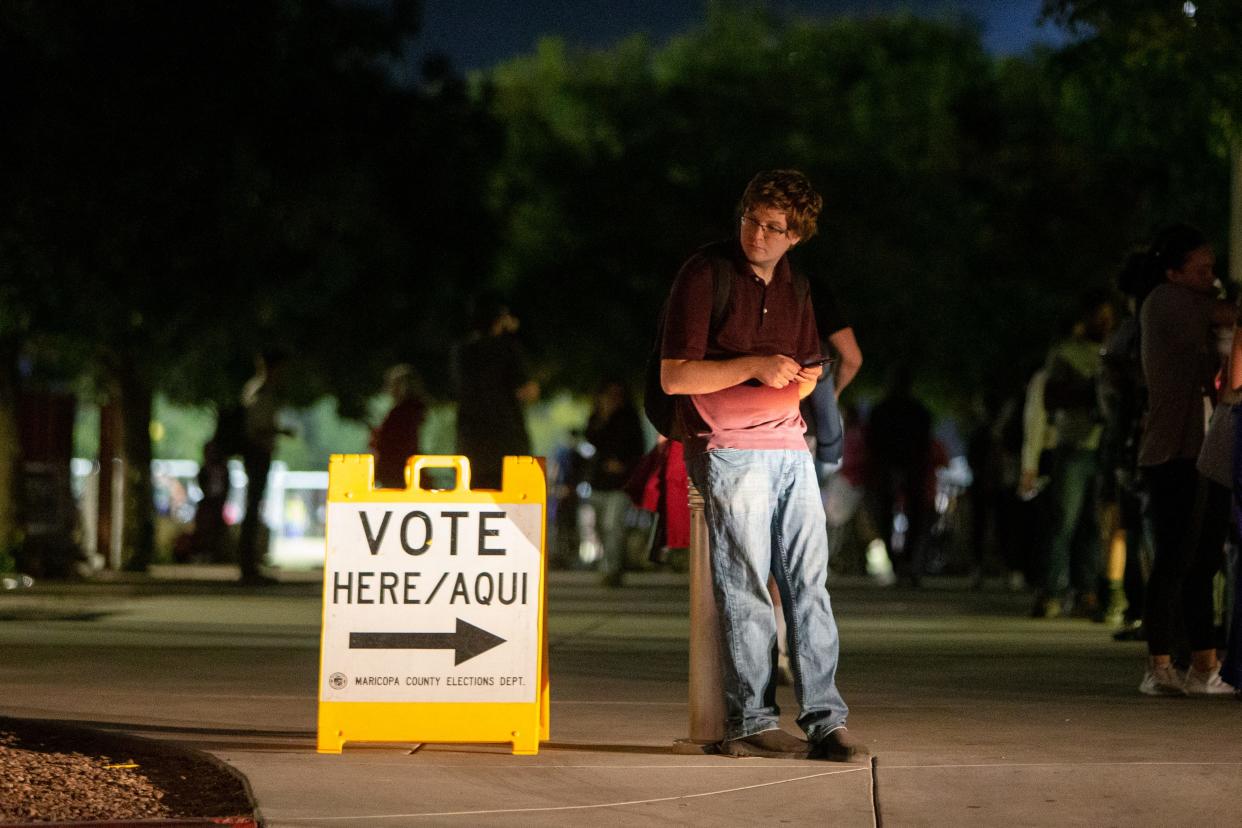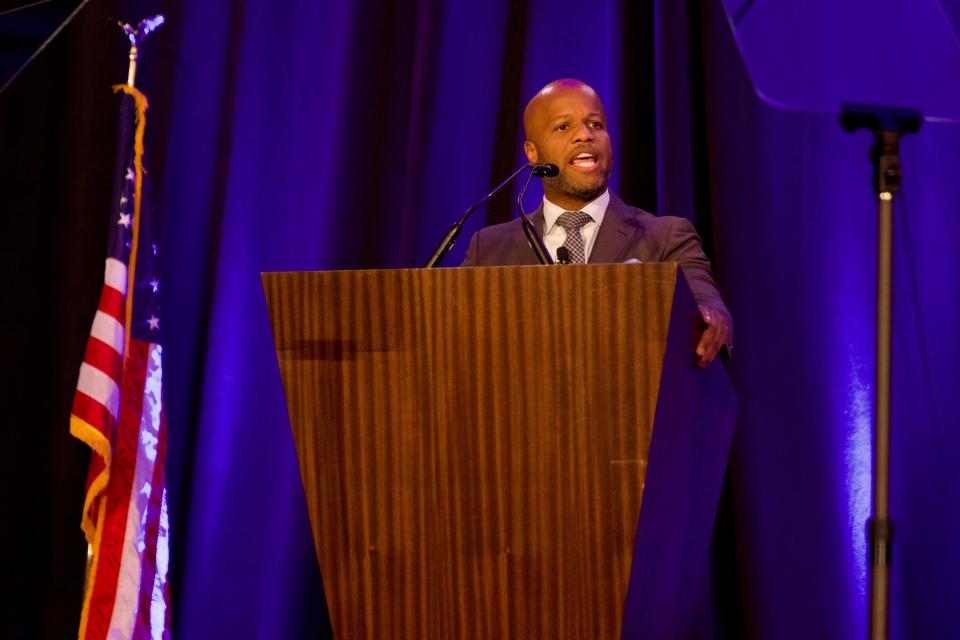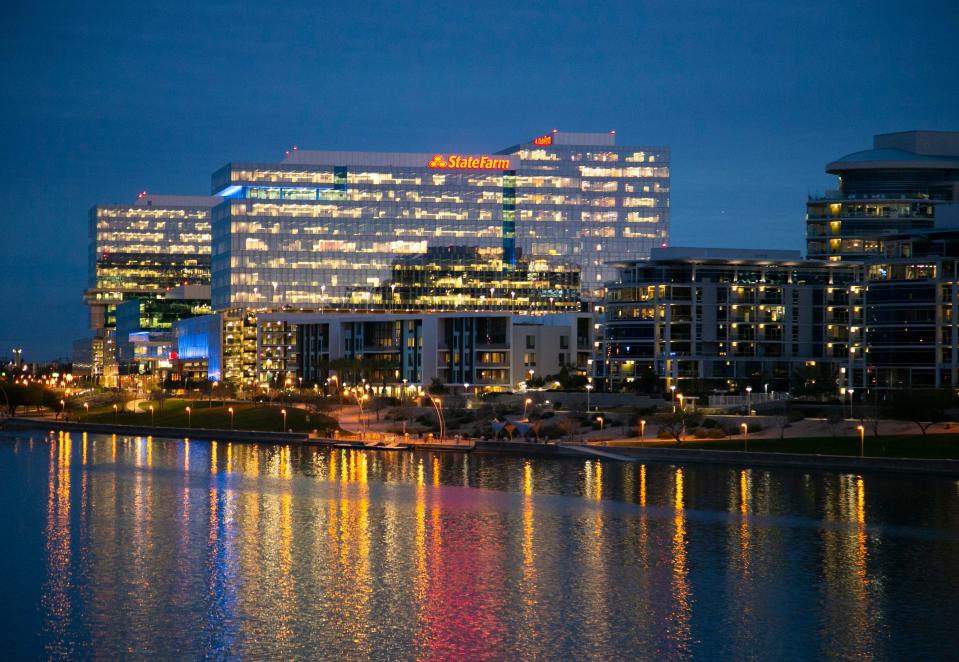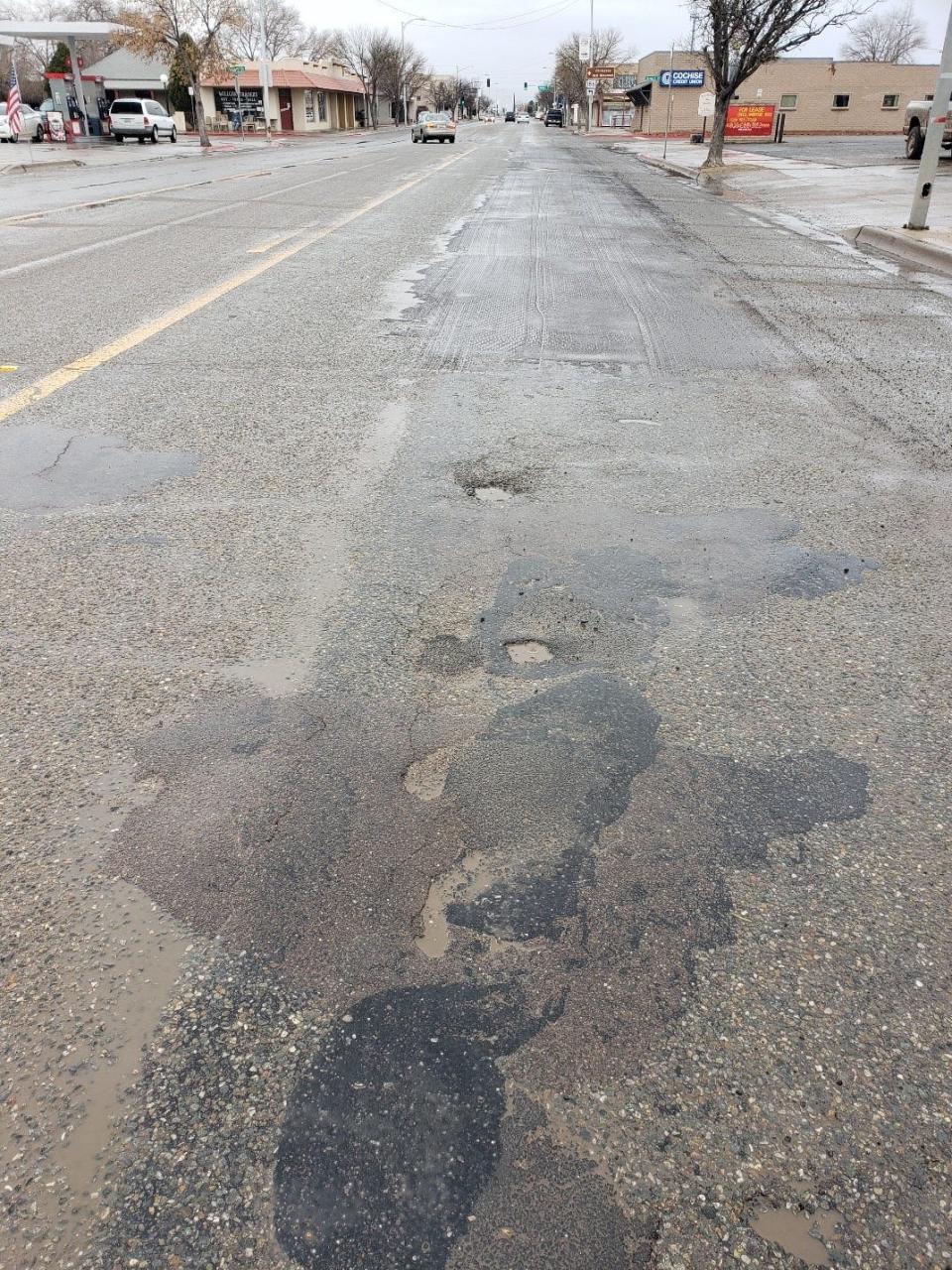Tempe's 2024 elections: Road repairs, high-rises and the City Council majority

Tempe voters will make major decisions for the city throughout 2024 as they cast votes on everything from who will run the community to how the city will grow for the next quarter century.
Voters will also weigh in on whether they want to fund an ambitious infrastructure program that officials promise will fix every street in Tempe within four years.
At least two municipal elections will take place in the new year, one in March and one in November.
In March, the mayor's office and three City Council seats will be on the ballot, along with General Plan 2050. That's a controversial proposal to update the city's growth plan to allow for more high-rises and the expansion of Tempe's urban core into its suburban south.
November's election will decide whether Tempe can take on nearly $140 million in debt to fund massive amounts of street repaving. The program would boost residents' property taxes but is expected to generate enough cash to repair every city street in Tempe by spring 2028.
Combined, 2024's elections promise to be even more consequential than the Arizona Coyotes vote that dominated the community for most of 2023.
The Arizona Republic broke down the most important details on each of those upcoming votes. Here's what residents need to know.
Majority of Tempe leadership on March ballot

While the majority of Tempe's seven-person governing body will be on the ballot for the March 12 election, only the three City Council positions are competitive because Mayor Corey Woods is running unopposed for a second term.
Tempe is guaranteed to get at least one new official because Councilmember Joel Navarro has decided not to seek another council term after serving 16 years in the role. He announced in November that he would instead pursue a spot on the Maricopa County Board of Supervisors.
Navarro's position will be filled by one of the three newcomers who have entered the race: Nikki Amberg, David Lucier and Hugo Tapia.
Whichever two newcomers do not secure the open position will be challenging incumbent Councilmembers Doreen Garlid and Randy Keating for their seats. Garlid is vying for her second four-year term on the council, while Keating is hoping to secure his third.
General Plan 2050: Growing Tempe up, urbanizing the city's south

General plans are long-term planning strategies that cities have to update every decade, per state law. They create development guardrails by broadly defining how pieces of land can be used, and updated versions have to be greenlighted by voters.
Tempe's proposed General Plan 2050 has been in the works for more than a year, and it could drastically change the layout of Tempe if approved by residents.
Compared with the existing plan, General Plan 2050 allows for far more housing units on properties south of Apache Boulevard, where Tempe's downtown ends and single-family neighborhoods begin.
It's meant to increase housing in a city that's running out of land but could lead to taller apartment buildings being built in historically more suburban areas ― sparking controversy among community members with competing interests.
More about the proposed plan: Tempe approves new General Plan; residents remain divided on density changes
More established residents, particularly older homeowners, have pushed back most strongly against the plan. They argue that it will upend Tempe's residential neighborhoods and chip away at the community's suburban character south of Apache. They also are concerned about environmental and traffic impacts of the denser developments.
Meanwhile, supporters of the plan argue that Tempe needs to welcome the expansion of high-density developments in order to meet demand in its housing market, combat rising rents and prepare for a population increase of 85,000 — a 46% uptick — by 2050.
$180M plan to fix every Tempe street within 4 years

Tempe uses a measure called the Pavement Quality Index to grade the condition of its more than 1,200 lane-miles of city streets on a scale from 0 to 100. The city's goal has long been to reach a 70% score by 2028, which would put it squarely in the "good" quality range, but the city's streets have sat stagnant at about 60% for the past decade.
City officials said that at its current pavement repair rate, Tempe won't hit that 70% goal by 2028, so they proposed an "accelerated" pavement improvement program in September that Mayor Woods touted as an initiative to fix up every city street within four years.
The full cost of the initiative will be just under $190 million between 2024 and 2028. Tempe currently only had $54 million set aside for pavement repairs over those years, so the city will have to come up with another $135 million to make its plan work.
That's where November's election comes into play. Tempe needs voters' permission to take on bond debt that will cover the funding gap, which the city will then pay off over multiple decades.
The catch is that cities pay off that type of debt using secondary property taxes, so whenever they borrow more money that tax goes up for residents. And Tempe's is already the highest in the Valley at $443 each year for a median value homeowner, or roughly 20% more than Scottsdale's, which has the second highest.
Tempe residents will ultimately decide to boost the city's median secondary property tax charges by $81 each year, or deal with mediocre road quality that isn't likely to get much better anytime soon.
Reporter Sam Kmack covers Tempe, Scottsdale and Chandler. Follow him on Twitter @KmackSam or reach him at sam.kmack@arizonarepublic.com.
This article originally appeared on Arizona Republic: Tempe's 2024 elections: Road repairs, high-rises and the City Council

